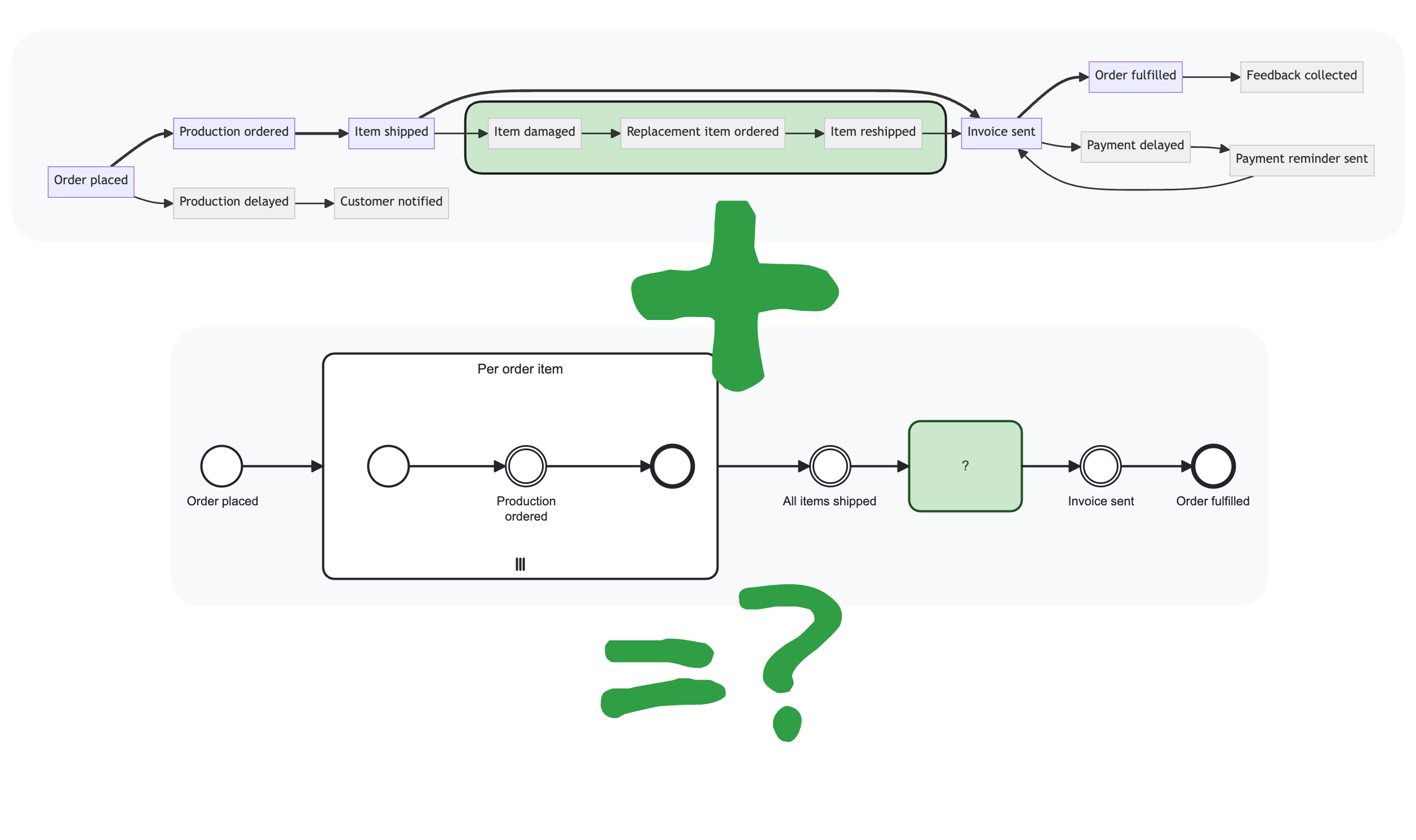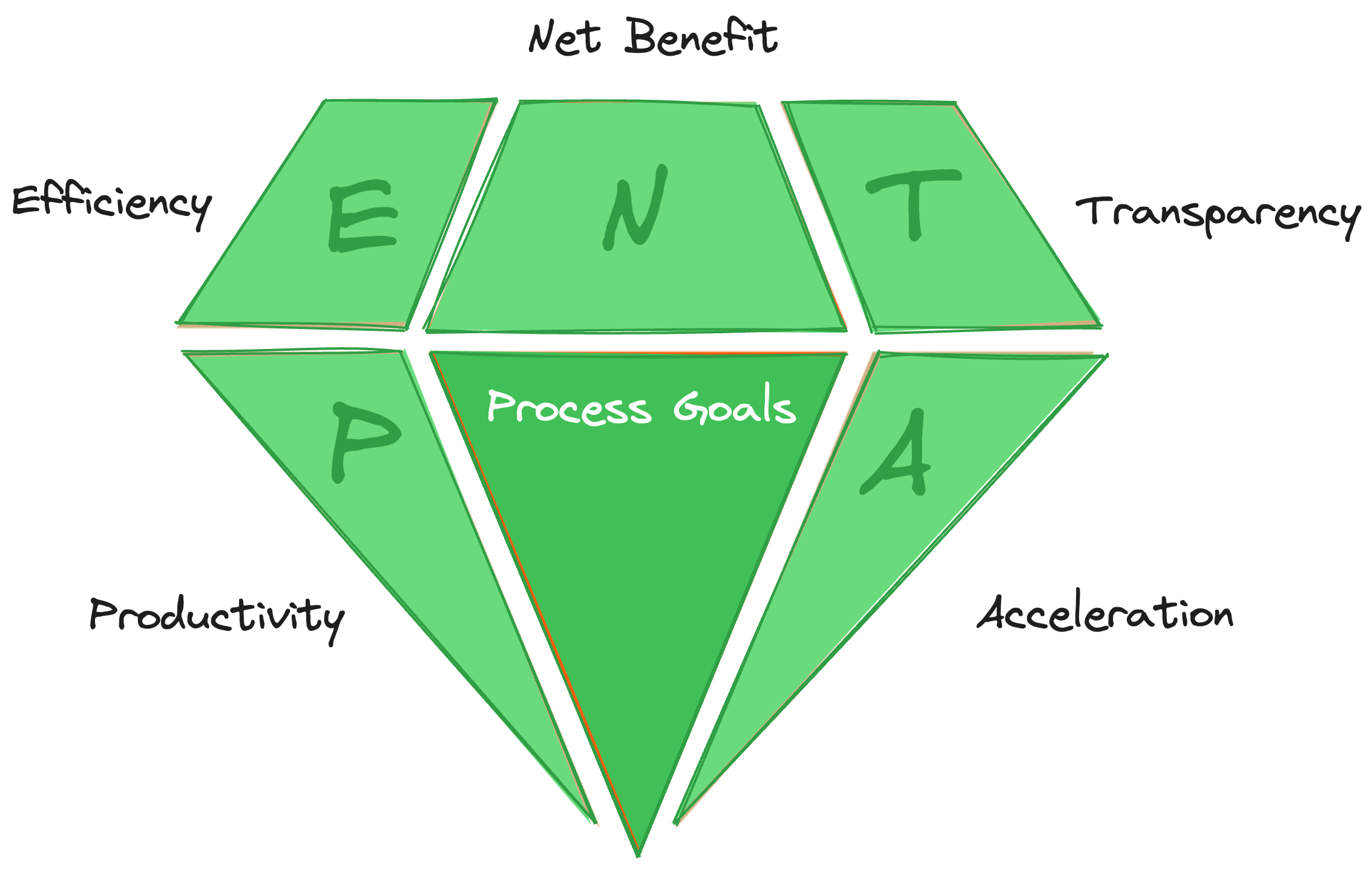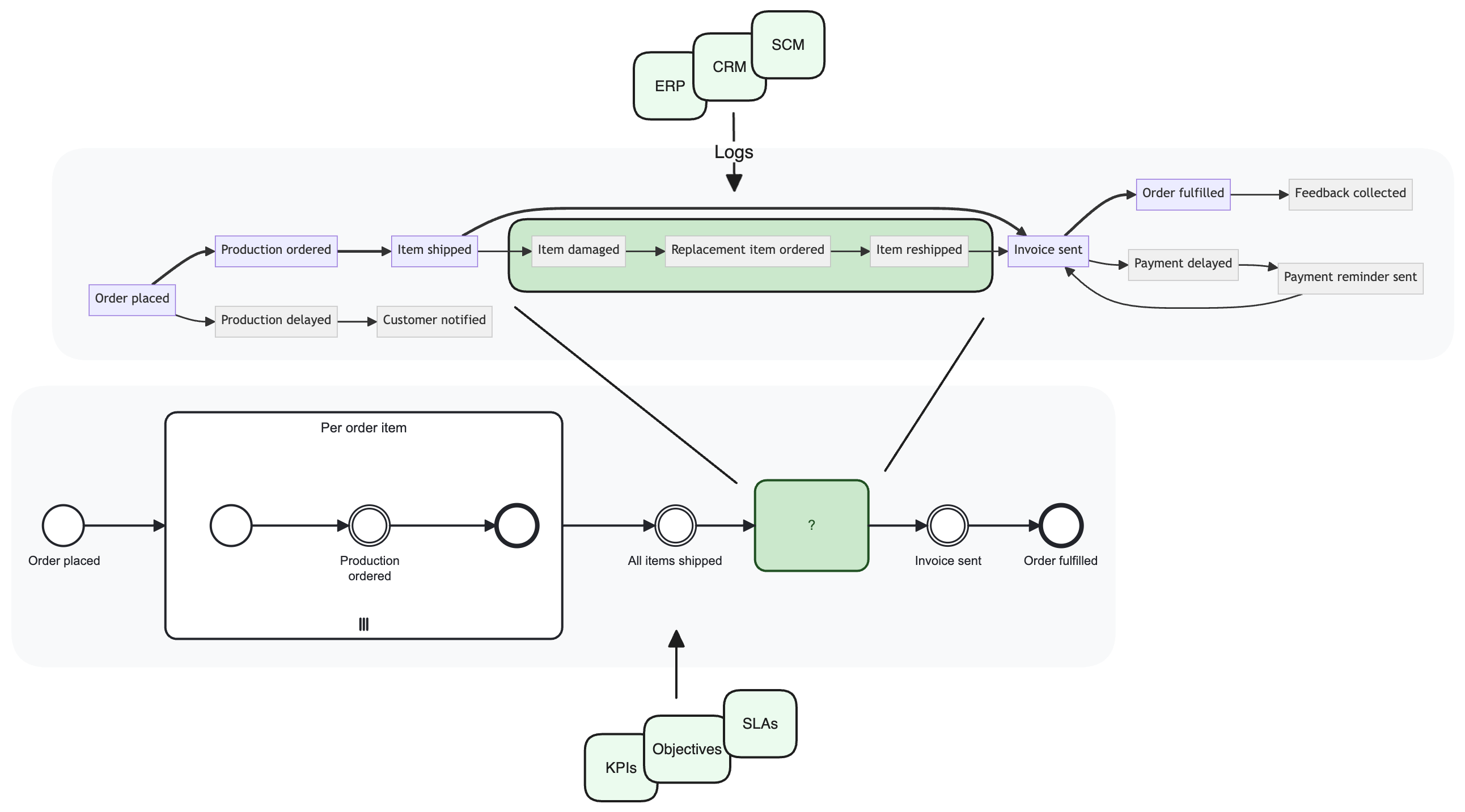Unlocking True Process Intelligence: The Fusion of Process Orchestration and Mining
In the fast-paced landscape of modern business, the quest for operational excellence has become paramount. Every organization strives to streamline its processes, optimize efficiency, and drive continuous improvement. And at the heart of this quest lie two powerful methodologies: process orchestration and process mining.

Merging Two Worlds That Belong Together
Traditionally, process orchestration and process mining have operated in separate realms. Process orchestration involves designing and optimizing workflows to achieve operational efficiency, while process mining delves into the analysis of event logs and data trails to uncover hidden insights and inefficiencies within processes. However, for true process intelligence, these boundaries should be broken down.
Understanding the Players: Process Orchestration and Process Mining
Let’s delve deeper into the intricacies of these methodologies:
Process Orchestration: At its core, process orchestration is about choreographing the various components of business processes to ensure seamless execution across a diverse set of systems, endpoints, and people. It involves designing workflows, automating tasks, and optimizing resource utilization to achieve predefined goals and objectives. Think of it as the conductor of an orchestra, harmonizing the disparate elements of a composition into a unified symphony of efficiency.
On the other hand, Process Mining is akin to a detective unraveling the mysteries of process execution. By analyzing event logs and transactional data, process mining uncovers the underlying patterns, deviations, and bottlenecks within processes. It provides valuable insights into how processes actually operate in the real world, enabling organizations to identify areas for improvement and optimization.
Setting the Stage: Defining Metrics and Goals
The following strategic process orchestration approach is courtesy of Tobias Conz, Product Manager of Camunda Optimize. With Optimize, you can define tangible goals and KPIs for your processes before and during process modeling and execution.
Before embarking on our journey towards supercharged process intelligence, it’s crucial to establish clear metrics and goals. Operational targets such as key performance indicators (KPIs) and service level agreements (SLAs) serve as the guiding principles for operational endeavors. But deriving these metrics from strategic goals requires a structured approach.
Luckily, frameworks exist to help derive operational goals from strategic objectives. The PENTA process goals framework by Prof. Dr. Guido Fischermanns is a comprehensive methodology for goal-setting that encompasses five dimensions:
- Productivity: Maximizing output with available resources.
- Efficiency: Achieving more with less by minimizing failures.
- Transparency: Implementing standardized, measurable processes.
- Acceleration: Speeding up processes without sacrificing quality.
- Net Benefit: Maximizing value creation by optimizing inputs and outputs.

By aligning operational goals with strategic objectives, organizations can ensure that their efforts are focused and purposeful.
Another relevant framework for process goals can be found at https://process-pattern.app/, which is a project driven by doctoral researcher Tobias Fehrer at the Research Insitute for Information Management (FIM).
Deriving Actionable KPIs from Goals
Based on these dimensions, actionable Key Performance Indicators (KPIs) should be derived to drive process targets. However, amidst the plethora of potential metrics, it’s vital to exercise restraint. Focus on a few selected KPIs that truly encapsulate progress towards goals.
Align Business Goals with Process Operations
To unlock tangible value from the alignment of business goals with process operations, organizations can follow a structured three-step approach:
1. Define Clear Goals and KPIs
Precisely articulate your project goals and corresponding KPIs. These metrics serve as the guiding star, illuminating the path towards operational excellence and strategic alignment.
2. Establish Robust Models and Reporting Mechanisms
With goals and KPIs in hand, the next step is to prepare models and set up reporting mechanisms. This involves designing comprehensive frameworks for process evaluation and performance monitoring to track progress in real-time and make data-driven decisions.
3. Cultivate a Culture of Continuous Improvement
The journey towards operational excellence is not a destination but a continuous evolution. Organizations must embrace a culture of continuous improvement, marked by relentless pursuit of innovation and optimization. Through ongoing analysis, experimentation, and iteration, organizations can uncover new opportunities for enhancement and drive sustained value creation.
Navigating the Path: Strategic Process Orchestration
With our goals defined, it’s time to chart our course towards process excellence through strategic process orchestration. This goal-driven approach leverages process modeling techniques to align operational processes with strategic objectives. Here’s how it works:
Pick Your Battles: Identify the processes that align with strategic objectives and define clear goals for each.
Map Your Milestones: Utilize BPMN 2.0 to sketch out the key milestones of your end-to-end processes, focusing on measurable points that reflect progress towards defined goals. Model only those events and key milestones that are essential and not replaceable, such as customer-facing events like „invoice received“ or „order placed”.
These events reflect the measurable points in the process, allowing to correlate to the defined goals and KPIs. Do not yet model the involved systems, like your CRM or ERP. Focus on the “happy path”.
Update Your Playbook: Enhance your process profiles with defined goals and KPIs, transforming them into living documents that guide your journey towards operational excellence.
Keep Tabs on Progress: Implement real-time process tracking to monitor execution against predefined goals and KPIs, enabling continuous improvement and course correction as needed.
Use a process orchestration platform such as Camunda to receive real-time events from the systems you use to track the execution of the happy path and relevant side paths.
- Iterate and Innovate: Apply a continuous improvement method to your operations. Iterate on processes based on the insights gleaned from tracking and re-evaluating against goals.
Business Process Model and Notation (BPMN) 2.0 is the industry standard for visualizing business processes in a clear and concise manner. This powerful notation system provides organizations with a standardized framework for representing complex workflows, making it easier to communicate, analyze, and optimize business processes. To learn more about BPMN 2.0 and its applications, visit the introduction to BPMN.
Unveiling the Missing Pieces: Process Mining to the Rescue
But what about the nuances and intricacies that lie beneath the surface of our orchestrated processes? This is where process mining ultimately comes into play, bridging the gap between modeled milestones and real-world execution.
Process mining uncovers the hidden dynamics of process execution, revealing insights into system interactions, stakeholder involvement, wait times, and decision points. By analyzing event logs and transactional data, organizations can identify inefficiencies, bottlenecks, and opportunities for optimization.
Process mining operates bottom-up, leveraging insights from event logs of existing systems to uncover hidden patterns, inefficiencies, and opportunities for improvement. These insights serve as a crucial foundation for understanding the current state of processes and identifying areas for optimization. On the other hand, process orchestration takes a top-down approach, deriving an operational model from predefined goals and optimizing it based on target KPIs. By aligning the insights from process mining with the goals set upfront, organizations can create a cohesive strategy for driving process improvement and achieving strategic objectives.

Combining the insights from process mining with predefined goals enables organizations to prioritize efforts and focus on initiatives that align with strategic objectives. For example, if the goal is to improve customer satisfaction, insights from process mining can identify bottlenecks or pain points in the customer journey, which can then be addressed through targeted process optimization efforts. By linking process mining insights to specific goals and KPIs, organizations can ensure that process improvement initiatives are directly tied to desired business outcomes.
Furthermore, integrating process mining with process modeling and orchestration enables organizations to create a closed-loop approach to process optimization. Process models derived from process orchestration efforts can be continuously refined and optimized based on insights from process mining. This iterative approach ensures that process improvement efforts are data-driven, agile, and responsive to changing business needs. By leveraging the strengths of process mining, goal-setting, and process orchestration in tandem, organizations can unlock true process intelligence and drive sustainable operational excellence.
Object-Centric Process Mining For True End-To-End Process Intelligence
For true process intelligence across end-to-end processes, object-centric process mining (OCPM) becomes a crucial tool. OCPM revolutionizes traditional process analysis by focusing on the interactions between objects across multiple endpoints. By providing a holistic view of end-to-end processes, OCPM enables organizations to uncover hidden dependencies, optimize process flows, and enhance contextual understanding. This allows to hook in process mining into process orchestration, since the reality of processes happens in a magnitude of different systems. Read more about object-centric process mining on the Celonis blog.
Bringing It All Together: Unleashing True Process Intelligence
By combining the powers of process orchestration and process mining, organizations can unlock a treasure trove of insights and opportunities within their business processes. From uncovering hidden value to driving continuous improvement and aligning stakeholders across the board, the benefits are manifold.
Ultimately, true process intelligence is not just about optimizing individual processes—it’s about aligning business operations with strategic objectives, fostering a culture of innovation, and driving sustainable growth. So, as you embark on your journey towards process excellence, remember: the path to success lies in the fusion of process orchestration and process mining.
References
[1] Tobias Conz, Camunda, Strategic Process Orchestration approach with Camunda Optimize.
[2] Prof. Dr. Guido Fischermanns, ibo Software GmbH, PENTA process goals framework.
[3] Tobias Fehrer, Research Insitute for Information Management (FIM), https://process-pattern.app/.

